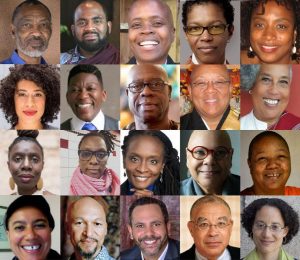Anagarika Dharmapala (1864–1933) was the founder of the Mahabodhi Society of India, and a monk who made his name primarily in India, despite having come from Sri Lanka. He is commonly described as a Buddhist missionary, but this epithet is better understood as one facet of who he really was, which is something much grander: one of the greatest figures of Buddhist nationalism, one of several native figures who united religious faith with patriotism and anti-imperialism, and one of the many thinkers who laid the groundwork for not only postcolonial Asia, but also, for better or for worse, Sinhalese nationalism.
While Dharmapala’s fame was surpassed in India by non-Buddhist titans such as Gandhi, Nehru, and many more, he was to become a hero in his own country of Sri Lanka. There was even a national holiday bearing his name in the 1960s, before being later subsumed under National Heroes’ Day, which is observed on 1 January. Many Sri Lankans respect him as a bodhisattva.
Anagarika Dharmapala was born on the island in 1864 as Don David Hewavitarne. By the 19th century, what was then known as Ceylon was dominated by Christianity, especially among the educated classes. It is difficult to overestimate how long and thorough this process had been. By the late 1700s, the Portuguese had taken control of much of Ceylon and converted the locals to Roman Catholicism. A little over a century later, the Dutch overthrew the Portuguese. Then the British took control of most of Ceylon and declared it a crown colony in 1798. The entire nation came under British control in 1815 and remained so until 1948. Until Dharmapala, Buddhism had long been displaced, relegated to the lowly status of a local faith with little influence or prestige.
As a member of the upper classes of local Ceylonese that lived on the coast, David was one of the many boys and girls that was given a Christian name. He was educated in Catholic and Episcopal missionary schools, but in the 1880s, he became involved with Colonel Henry Steel Olcott (1832–1907) and Madame Blavatksy (1831–91), themselves pioneers of a syncretic movement called Theosophy. On 17 May 1880, the pair came to Ceylon and later took refuge and the lay precepts. Olcott would go on to found hundreds of Buddhist schools. His example spurred David to change his name to Anagarika Dharmapala.
Dharmapala joined the Theosophical Society after meeting Blavatsky and Olcott. He served as a translator to assist Olcott in his initiatives to establish Buddhist institutions all over the nation and revive Buddhism. At the time, Dharmapala was practically Olcott’s protégé, and they pushed an inclusive interpretation of Buddhism that merged Eastern and Western ideas (mainly secularism and egalitarian thought imported from the scientific revolution and the French and American Revolutions), forming a school of thought has come to be sometimes called Buddhist modernism.
This modernism not only assimilated Western philosophy, but also Western methods of institutional development, public communication, and technology. Buddhist modernism is characterized by a rationalism and openness to science. It de-emphasized mythological and supernatural elements and favors meditation over ritualistic and devotional practices. It was seen by local elites in Sri Lanka and India as appropriate for the modern world, frequently influenced by Western thought, and adopted by Buddhists as a rebuttal to claims of superiority made by Christians or European rulers.
In 1888, Dharmapala and Olcott travelled to Japan to explore Buddhist landmarks and make an effort to promote harmony between the different schools of Buddhism. In 1891, he established the Mahabodhi Society of India at Colombo, with its goal being the revival of Buddhism in India. Earlier in the year he and Blavatsky had visited the subcontinent, and Dharmapala was upset at seeing the deplorable conditions of Buddhist temples, such as the Mahabodhi Temple. As he wrote, “The bhikkhus are indolent, they have lost the spirit of heroism and altruism of their ancient examples” (Guruge 1965, 337). Dharmapala established the Maha Bodhi Society in Colombo, before it was moved to Calcutta and began expanding its branches. He would go on to establish his new Maha Bodhi Society branches in London, New Delhi, and New York.
Dharmapala was influenced by two of the most senior Buddhist figures: Migettuwatte Sri Gunananda Thera and Venerable Hikkaduwe Sri Sumangala Thera. He was a prolific writer. He penned articles for the Sarasavi-Sandaresa, a weekly paper. This was the first of many writing positions he would hold over the course of his life. Later, he took over the full operation of the paper, producing, publishing, and delivering it twice weekly. In 1888, he founded the Buddhist, an English-language newspaper. He utilized both papers to inform the Sinhalese and English-speaking population of his views on the Buddhist revival and Sinhalese nationalism.
The Mahabodhi Society’s goals eventually expanded to include spreading Buddhism in Ceylon and India, a more proactive and “assertive” vision as opposed to the “defensive” objective of saving Buddhism from extinction. To help with this process, he founded the Maha Bodhi journal in 1892. When Dharmapala went to Chicago in 1893 to represent Theravada Buddhism at the World Parliament of Religions, he became a figure well-known outside of Asia. Mary E. Foster, a well-to-do American patron, would assist in funding additional international trips for him.
Ironically, it was the Victorian-style perennialism of Theosophy that would eventually force Dharmapala to part ways with Olcott, for Dharmapala saw Buddhism as the ideological and spiritual antidote to Western ideological dominance, rather than as a faith to be subsumed into a vague universalism. Dharmapala was also highly unusual for not having formally ordained under a senior bhikkhu throughout the course of his life. The meaning of the name Dharmapala is “Protector of the Dharma.” The title Anagarika means “homeless.” Anagarika Dharmapala committed to living a life in accordance with Buddhist principles, which include celibacy, or refraining from sexual activity. He was therefore not a Buddhist monk, but he was dressed in a yellow robe that looked similar to monks.
He would not ordain until the year of his death, 1933, at Sarnath. Here, he passed away at 68.
Revivalist. The earliest engaged Buddhist. A nationalist in religious garb. Buddhist modernist, or even “Protestant Buddhist.” Some contemporary researchers of Buddhist revivalism like Heinz Bechert have insisted that “Buddhist Modernism” is more appropriate, while others like Gananath Obeyesekere prefer “Protestant Buddhism.” There are therefore many ways to understand the complex figure of Dharmapala. He is most remembered for three notable accomplishments. First, he revived Buddhism in India and Sri Lanka. Second, he spread Buddhist teachings across Asia, North America, and Europe. Third, he revived a Sinhalese nationalism that had lain dormant for so many centuries under foreign occupation.
But he was, for all his political agitation, a serious Buddhist teacher. Dharmapala emphasized on moral behavior in the world and, thanks to his Western influence, has been called the earliest engaged Buddhist. For instance, he emphasized the importance of incorporating fundamental Buddhist principles like the Eightfold Path into one’s daily life. Dharmapala wrote:
“The ideal of the Buddhist faith consists in realising through spiritual experience and moral acts, the continuity of life in man and nature and the fellowship of all beings.” (Guruge 1965, 748) He further said, “To build a rest house for the public good, to build a bridge, . . . to help the poor, to take care of parents and holy men, . . . to establish free hospitals . . . all these are productive of good karma.” (Guruge 1965, 737)
What is certain is that Buddhism was the native heritage of Ceylon despite invasions by maritime empires and the spread of Christianity. In the 19th and 20th centuries, Anagarika Dharmapala and other reformers worked to restore Buddhism, bringing back a philosophy with more than 2500-year-old roots. As a result of their efforts, Sri Lanka finally rose, or more accurately, returned, to prominence as the world’s main Theravada Buddhist center.
References
Ananda Guruge (ed.). 1965. Return to Righteousness: A Collection of Speeches, Essays, and Letters of the Anagarika Dharmapala. Ceylon: Government Press.
Related features from BDG
Anula Stupa Relics Unearthed: New Excavations Illuminate the Women’s Order in Sri Lanka and Around the World
Karmayōgī Kṛpāśaraṇa Mahāthērō (1865–1927): The Forgotten Monk Who Built Buddhism in Modern India and Bangladesh
Buddhistdoor View: The Place of Expertise and Experience in Buddhism Today













